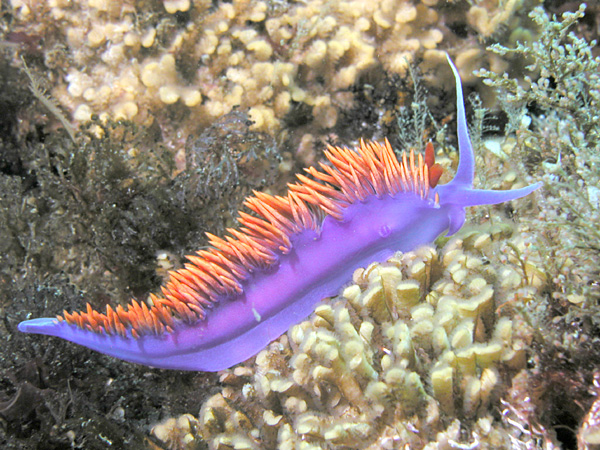
Photo credit: Aquaimages
The Spanish shawl nudibranch or Flabellina iodinea is another ocean beauty!
This sea slug grows to be about 38 mm (close to 1.5 inches), but what it lacks for in size the Spanish shawl makes up for with brilliant coloring that knocks your socks off. It’s body is a rich shade of purple offset by bright orange cerata. (Cerata are part of a nudibranch’s respiratory system and are sometimes referred to as gill extensions.)
And as if that wasn’t enough color, the Spanish shawl also has maroon rhinophores, which are sensory organs tucked behind the purple tentacles on its head. All of this fabulous color combined with this nudibranch’s strange swimming style inspired the common name Spanish shawl.
Without the aid of fins or flippers, a Spanish shawl nudibranch generates enough momentum to swim by quickly folding its body back and forth. It’s quite a sight to behold! According to the book Cabrillo Beach Coastal Park by Mike Schaadt, Ed Mastro and Cabrillo Marine Aquarium, this movement is “reminiscent of a Spanish dancer with a brightly colored shawl.” Hence the name.
Spanish shawl nudibranchs also get around the old-fashioned slug way, by crawling. They spend their days living along the west coast of North America eating hydroid polyps. According to Cabrillo Beach Coast Park, the Spanish shawl wards off predators by producing a nasty tasting slime, now that’s cool!
Interesting info on this aquatic Flamenco dancer. Love its color and beauty.
TRUE!! I agree
I am doing a report on these creatures.
Really! So am I!
I love snails and slugs of every kind, especially this one. Very beautiful.